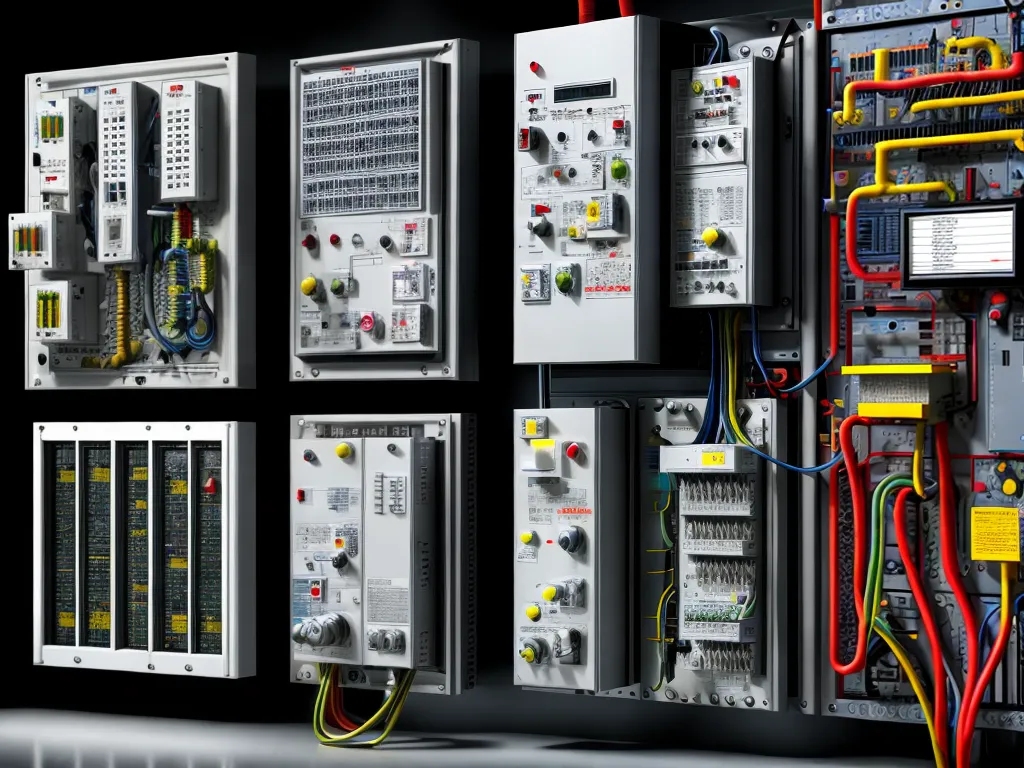
Understanding the National Electrical Code's Requirements for Industrial Control Panels
Introduction
Industrial control panels are crucial components in many industrial facilities and manufacturing plants. They house automation systems and controls that regulate machines, processes, and infrastructure. However, industrial control panels also pose serious safety risks if not properly designed, installed, and maintained. This is why the National Electrical Code (NEC) includes extensive requirements surrounding these systems.
As the principal individual responsible for industrial controls in my facility, I need a thorough understanding of the NEC's rules to ensure our panels comply with codes and reduce risks. In this article, I will provide an in-depth overview of key NEC guidelines for industrial control panels and describe how to apply them.
Defining Industrial Control Panels
The NEC defines an industrial control panel as an assembly of two or more components which function together to regulate flow, temperature, pressure, or other process variables in industrial settings. Common components found in these panels include power supplies, terminals, controllers, meters, instruments, fuses, circuit breakers, and wiring.
Industrial control panels do not include household or commercial appliances like washers, dryers, and air conditioners. They also exclude motor control centers which only direct power and do not control processes. However, motor control centers may incorporate industrial control panels.
Determining NEC Compliance
The NEC classifies industrial control panels based on their voltage, intended location, and other attributes. These classifications determine which code requirements apply. For instance, control panels with under 1000 volts are covered in NEC Article 409, while those above 1000 volts fall under Article 490.
Some key factors in assessing NEC compliance include:
- Voltage: Under 600 volts or over 600 volts
- Environment: Indoor or outdoor installation
- Construction: Enclosed (NEMA types) or open-type
- Power Source: Supplied by a motor or generator
Thoroughly examining the industrial control panel's specifications and installation parameters is crucial in identifying the applicable NEC standards. Consulting the NEC itself or a qualified electrical professional can help determine the classification.
Key NEC Requirements
Though requirements vary based on the control panel type, some core NEC guidelines apply broadly:
Overcurrent Protection
Industrial control panels must incorporate overcurrent protection like fuses or circuit breakers for each supplied circuit. This protects against excessive currents from overloads, short circuits, and ground faults. Overcurrent devices must be sized appropriately for the wire gauge and loads.
Disconnecting Means
A disconnect switch that can isolate the industrial control panel from its power source is mandatory. It must be readily accessible and visible under the NEC. This allows workers to cut power to the panel for maintenance or emergencies.
Wire Sizing
All conductors in the industrial control panel must be sized to safely carry expected loads without overheating. NEC Tables 310.16 and 310.17 provide ampacity ratings to select wire gauges based on insulation type, temperature, and other aspects. Undersized wires present fire and shock hazards.
Grounding and Bonding
Industrial control panels must have a solid connection to ground via properly sized equipment grounding conductors. Bonding jumpers help equalize voltages between metal parts. This protects against electric shock and stray currents.
Enclosures
Suitable enclosures that protect against expected environmental hazards are required. Common examples include NEMA Type 1 for indoors, Type 3R for outdoors, and Type 12 for industrial areas with dust, dirt, and drips.
Markings and Documentation
The industrial control panel must be clearly marked with its voltage, amperage, and other ratings. Diagrams, instructions, and warning labels regarding its installation and operation must be included.
Following Proper Installation and Maintenance Procedures
Merely designing and building an NEC-compliant industrial control panel is insufficient. Users and electricians must follow proper protocols during installation and over its operating lifetime. Some key procedures include:
- Carefully mounting and securing control panels to avoid loosening, leaks, corrosion, and fatigue.
- Using appropriate wire types, sizes, and terminal connections for installation.
- Verifying grounding, overload settings, and short circuit ratings upon commissioning.
- Establishing inspection, testing, and maintenance schedules to check components and wiring.
- Ensuring only qualified personnel service control panels after de-energizing and lockout/tagout.
- Modifying or expanding panels only after thorough NEC reviews.
Conclusion
The NEC requirements for industrial control panels help reduce electrical hazards and ensure safety. However, effectively applying them requires extensive knowledge of control panel attributes, environments, construction, and operation. As the party responsible for such equipment in my facility, I must make these NEC principles an integral part of my design, installation, maintenance, and inspection processes. This detailed overview and guidelines provide a strong knowledge base in that regard. With proper adherence to the code, I can help ensure our industrial control panels safely perform for years to come.